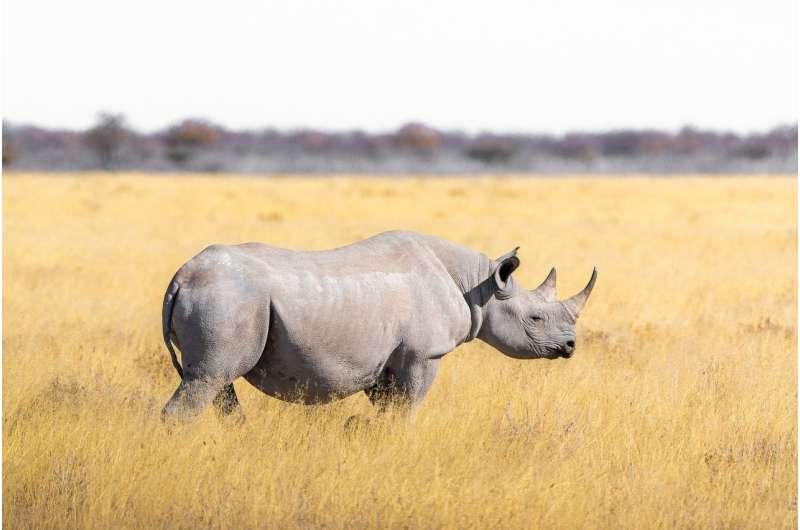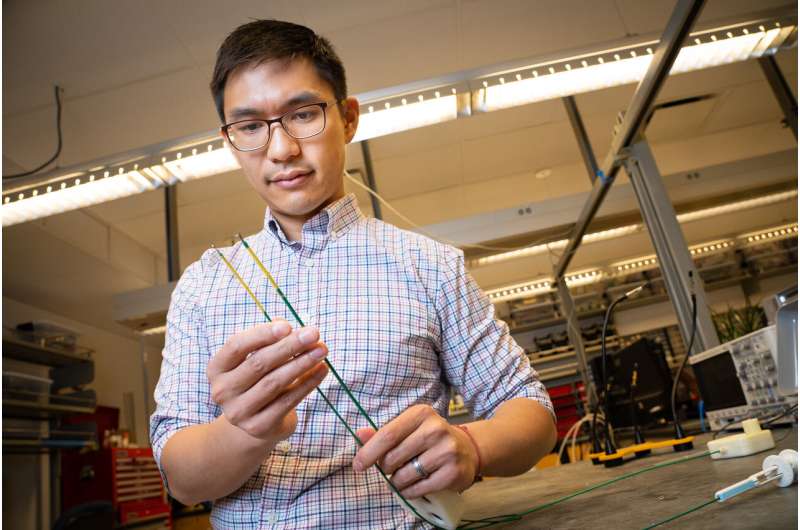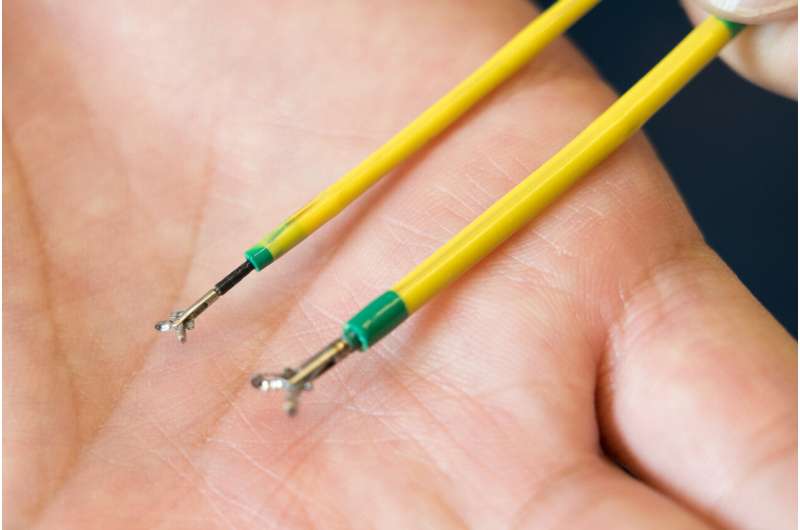Robots to the rhino rescue

The critically endangered northern white rhino might have more of a chance thanks to a partnership between the University of California San Diego and San Diego Zoo Global.
With just two northern white rhinos remaining in the world, both of whom are female, scientists are racing against the clock to rescue the species from the brink of extinction. Decades of poaching and habitat loss have led to their dramatic decline. Hope for their survival now rests on scientists' ability to develop innovative methods for repopulating the species.
Enter a flexible, snakelike robot that could make it easier for zoologists to perform artificial insemination and embryo transfer on rhinos. That's the type of tool that San Diego Zoo Global researchers and UC San Diego roboticists have teamed up to create. They are currently seeking crowdfunding to help design and build the robot.
"It's essentially a long, thin catheter that can be steered through a rhino's cervix to deliver a specimen to the uterus," said Michael Yip, a professor of electrical and computer engineering at UC San Diego.
This may at first sound straightforward, but navigating a female rhino's reproductive anatomy is incredibly complicated. "The rhino cervix is very large and tortuous," said Barbara Durrant, who serves as Henshaw endowed director of reproductive sciences at San Diego Zoo Global. It has a series of twists and turns like switchbacks on a steep mountain road. This goes on for 8 to 12 inches. Add to that a fairly long vagina plus the uterine body leading up to the uterine horn, and that totals up to 27 inches worth of rhino anatomy to get through before depositing semen or an embryo.

To make their way through this labyrinth, Durrant's team currently uses a stainless steel catheter, 5 millimeters in diameter, with a 45-degree bend at the end. They have to guide this through the rhino cervix by hand. "It's difficult and requires a bit of manipulation to negotiate and twist this through gently, so it doesn't damage the cervical tissue," Durrant said.
This technique has worked so far for doing artificial insemination. It's typically performed when a female rhino's estrogen levels are high, which causes her cervical tissue to soften and open.
But it gets even trickier when researchers have to do an embryo transfer. This procedure is usually done later in the rhino's cycle when her progesterone levels are high. That causes her cervix to stiffen and close. "So we can't use anything that's rigid," Durrant said.
The solution that Durrant and her team were looking for happened to be just 30 miles away. At UC San Diego, Yip and his Advanced Robotics and Controls Lab were already at work building flexible robotic catheters. These are two to three-millimeter-diameter robots, measuring a couple meters in length, that can be shaped and maneuvered through complex spaces deep in the body with high precision.
Because neither of the remaining northern white rhino females are able to carry a pregnancy, Durrant's team will use the robotic catheter on a related subspecies, the southern white rhino. The plan is to first create northern white rhino eggs and sperm using stem cells from previously collected frozen cell lines, then fertilize them to generate northern white rhino embryos. Researchers would then use the robot to implant the resulting embryos in surrogates.
"The ultimate goal is to produce a self-sustaining herd of northern white rhinos, first in captivity and then back into the wild," Durrant said. "That's still many, many years down the line, but we have excellent collaborators both here and around the world that are working with us and helping us move steadily in that direction."
Yip's original plan was to develop the flexible robotic catheters for human use in procedures like colonoscopies. But when Durrant learned of Yip's technology, she saw a perfect opportunity for collaboration and reached out. Yip invited her to visit his lab, and after seeing how useful the robots could be for the zoo's work, a partnership was born.
"As we were talking, we started realizing some of the surgical robotics that we were developing for humans could potentially be translated to the conservation of endangered animals," Yip said. "And with the San Diego Zoo essentially in our backyard, this presented a great opportunity to work closely together."

Yip's robot can snake through extremely complicated canals, like the rhino's cervix, more easily and gently than conventional tools. To flex back and forth, it uses a series of tendons running along its length. Pulling on a tendon on the left side of the device would make it turn left. Pulling on a tendon on another side would make it turn another direction.
"You can basically marionette the device to curve into any shape you want," Yip said. "And you can control it to make very fine, delicate movements so that procedures could be done in the animal safely and non-traumatically."
The robot will be equipped with a small camera head at the tip to help an operator see where it's going. It will also have a channel for delivering its cargo—semen or an embryo—to the uterus.
"At the end of the day, I hope that technologies like this can be used to both repopulate critically endangered species and counter some of the unfortunate human poaching that has been going on around the world," Yip said.
Provided by University of California - San Diego



















